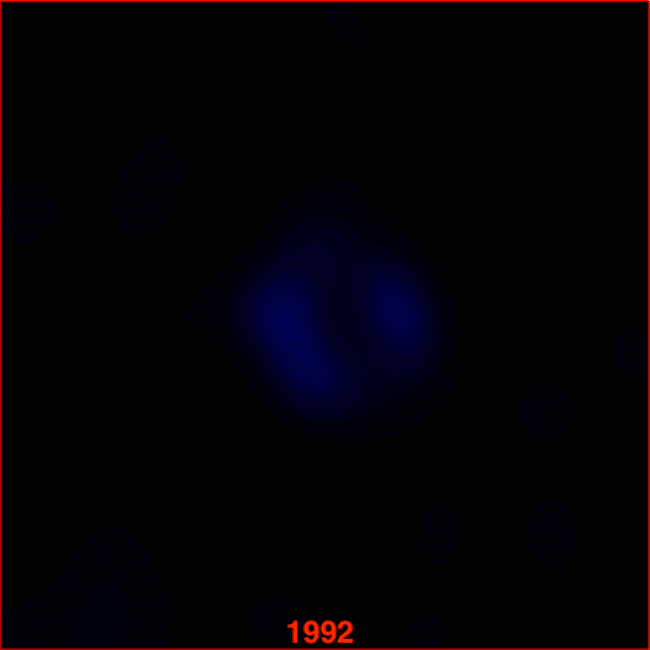Timelapse shows 25 years of Supernova 1987A
Deborah Byrd in SPACE | November 4, 2018
If you were alive and interested in astronomy then, you’ll remember Supernova 1987A, the 1st supernova visible in Earth’s skies since 1604. The new timelapse shows its aftermath over a 25-year period, 1992 to 2017.
Image via Yvette Cendes/University of Toronto/Leiden Observatory.
One of the major astronomical events of the last century was Supernova 1987A. It was the closest observed supernova since Kepler’s Supernova, visible in 1604, and the first supernova visible in earthly skies since the invention of the telescope. It first appeared in Earth’s night skies – visible only from the Southern Hemisphere – on February 24, 1987. It stayed bright enough to see with the eye for many months. And then it faded, but astronomers with telescopes continued to follow it. Since then, Supernova 1987A has become one of the most studied objects in the history of astronomy. Last week, astronomers at the Dunlop Institute of the University of Toronto released the new timelapse shown at the top of this post, showing the supernova as it evolved over 25 years.
The supernova was the cataclysmic death of a blue supergiant star. It was located in the Large Magellanic Cloud, a small satellite galaxy of the Milky Way, at a distance of 168,000 light-years (and thus, of course, the supernova actually took place that many years ago).
 |
 |
|
|||||||||||
 |
 |
||||||||||||
|
|
|
|
|
|
|
||||||||
 |
|
|
|
|
|
 |
|||||||
|
|
|
|
|||||||||||
|
|
|||||||||||||
|
|
|
|
|
|
|
|
|
|
|
|
|
|
|
Results 1 to 1 of 1
Thread: Supernova 1987A
-
11-04-2018, 01:11 PM #1
Supernova 1987A
Beginner's Guide for Rocket, NFPS and IKS66...
http://iptvtalk.net/showthread.php?2...-you-should-do
Kodi Options for Rocket, NFPS and IKS66...
http://iptvtalk.net/forumdisplay.php?71-Kodi
Check the Announcement Section...
http://iptvtalk.net/forumdisplay.php...-Announcements
Similar Threads
-
Black Dwarf Supernova Explosions
By ilan in forum The Universe in ReviewReplies: 0Last Post: 08-23-2020, 01:09 PM -
Neutron stars are born in supernova explosions
By ilan in forum The Universe in ReviewReplies: 0Last Post: 02-12-2020, 02:06 PM -
Supernova 1E 0102.2-7219
By ilan in forum The Universe in ReviewReplies: 0Last Post: 12-14-2018, 01:34 PM -
Supernova Remnant Simeis 147
By Capt.Kangaroo in forum The Universe at a GlanceReplies: 0Last Post: 05-23-2017, 10:28 AM -
Just hours after a Supernova explosion
By ilan in forum The Universe at a GlanceReplies: 0Last Post: 02-14-2017, 01:20 PM







 Reply With Quote
Reply With Quote